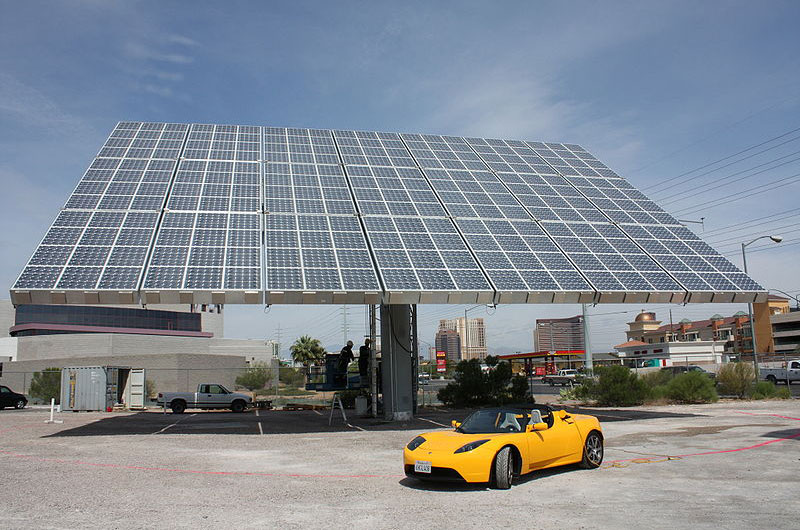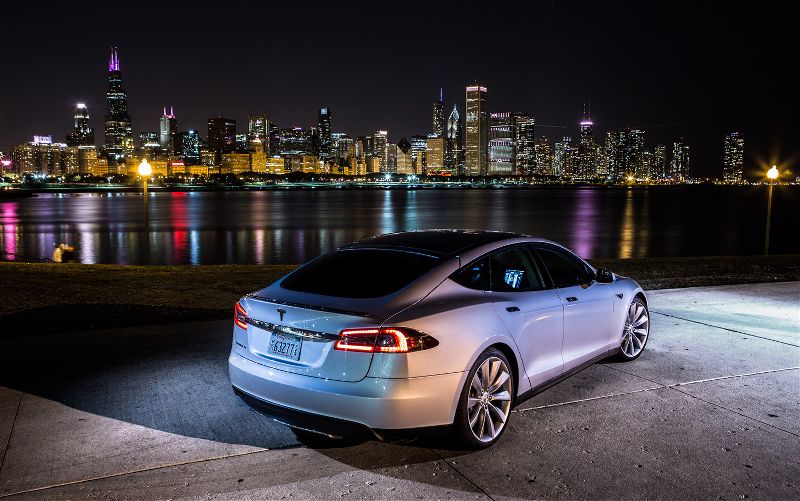California ve el almacenamiento de energía como una herramienta fundamental para mejorar la gestión de la red eléctrica, integrar una cantidad cada vez mayor de energía solar y eólica, y reducir las emisiones de gases de efecto invernadero.
Tesla Motors, mejor conocida por hacer el modelo totalmente eléctrico S Sedán, está utilizando su tecnología de baterías de iones de litio para posicionarse como uno de los favoritos en el mercado emergente de almacenamiento de energía que complementa y, en última instancia, podría poner en peligro a la red eléctrica tradicional.
"Vamos a desvelar la batería para el hogar Tesla, la batería de los consumidores que será utilizada en las casas o negocios de las personas bastante pronto", dijo ayer el presidente ejecutivo de la empresa, Elon Musk, durante una conferencia telefónica.
La combinación de paneles solares con baterías grandes y eficientes podría permitir a algunos propietarios evitar la compra de electricidad a los servicios públicos. Morgan Stanley dijo el año pasado que el producto de almacenamiento de energía de Tesla podría ser "perjudicial" en Estados Unidos y Europa ya que los clientes buscan evitar las tarifas por servicios públicos yéndose "fuera de la red". Musk precisó que el lanzamiento del producto se produciría en el próximo mes o en dos meses.
"Tenemos el diseño hecho, y su producción debería empezar en unos seis meses más o menos", señaló Musk. Tesla ya ofrece unidades de almacenamiento de energía residenciales para un selecto grupo de clientes a través de la empresa de energía SolarCity.
La fábrica de Fremont, California, de Tesla está haciendo sistemas de almacenamiento estacionarios más grandes para las empresas y los clientes de los servicios públicos.
El fabricante de automóviles con sede en Palo Alto ha instalado una unidad de almacenamiento en su estación Tejon Ranch Supercharger en la Interestatal 5 al sur de California y tiene varias otras instalaciones comerciales en el campo.
Las acciones de Tesla cayeron en las primeras operaciones ayer luego que el fabricante de automóviles eléctricos no cumpliera los objetivos de entregas y reportara una inesperada pérdida trimestral.
Los títulos bajaron 4,6% el jueves cuando Tesla anunció una pérdida en el cuarto trimestre, excluyendo ciertos ítems, de 13 centavos por acción, en una carta a los inversionistas publicada en su sitio web.
Los analistas habían estimado una ganancia de 32 centavos por acción, en promedio, según datos compilados por Bloomberg.
Tesla entregó un récord de 9.834 vehículos, superando la estimación promedio de los analistas de casi 1.000 y su propia meta de 1.345 automóviles.
La compañía dijo que si bien había cumplido con el objetivo de producción para todo el año de 35.000 autos Modelo S, muchos no se terminaron hasta fines de año y no pudieron ser entregados a los clientes en 2014 debido a las vacaciones de Navidad y un duro invierno.
























